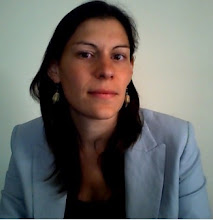Indigenous Women Convene Summit in Mexico
Women's Enews
Run Date: 12/02/02
By Laurence Pantin
WEnews correspondent
A first-of-its-kind meeting will ask indigenous women what obstacles are in their way of good health and educational opportunities--and how they think governments should address their needs.
MEXICO CITY (WOMENSENEWS)--Silvia de Jesus Maya never had the chance to go to school. Maya, a Mazahua Indian, started working when she was a girl, married when she was 14, and had the first of her four children when she was 16. It was only after living through police repression, stone throwers who mocked her traditional dress and the unsolved murder of her father by thieves in 1996 that she decided to learn how to read and write so that she could defend herself, her family and her people from discrimination. By then, she was 37 years old.
Maya founded el grupo Mansion Mazahua, A.C. (the Mazahua House Group) in Mexico City, where indigenous women study together and advocate for education and housing for their communities. This week, 260 indigenous women like her are in Oaxaca, Mexico, to brainstorm about how to increase the political representation of Latin America's 25 million indigenous women and improve their health, literacy and treatment on the job.
Mexico has no national plan that specifically addresses the problems of its indigenous women, says Alfonso Alem, executive director of the Rigoberta Menchu Tum Foundation, which organized this first Indigenous Women Summit of the Americas from Nov. 30 to Dec. 4. Indigenous women are directed to programs for women living in poverty, as if "poor" and "indigenous" are synonyms, Alem says.
And, what government help there is, is useless, adds Maya, a resident of Mexico City since she was 2 years old.
"On the contrary, it makes us vulnerable," she says. "The most important thing that the government should give to indigenous peoples is education and work projects, instead of giving money."
Indigenous Women Are Invisible to Researchers
The scant research on the status of indigenous women in Latin America speaks to their lack of visibility, Alem says.
"If we look at the rates relating to heath, mortality, birth or education, the most terrible numbers are always concentrated on indigenous women," says Paloma Bonfil, coordinator of indigenous women's programs at the Mexican president's Office for Indigenous Affairs. Based on her nationwide investigations, Bonfil estimates that more than 87 percent of indigenous women older than 15 are illiterate, compared with 51 percent of indigenous men. Similarly, life expectancy for indigenous women in Mexico is 71.5 years, compared to 76 years for their male counterparts.
Indigenous women elsewhere in Latin America have a similar quality of life, says Xochitl Galvez, head of the indigenous affairs office. Indigenous women are the poorest of the poor, she says: Because of their limited education, these women often aren't even aware of their basic rights and are consequently exploited, receiving lower wages if they are paid at all. Indigenous women also lack access to health services, are often victims of domestic violence and generally work longer hours due to lack of infrastructure in their villages. Because many of these villages lack water and electricity, women must walk long distances to get water and scavenge for firewood, Galvez says.
An Otomi Indian herself, Galvez was the victim of intense discrimination when, as a teen-ager, she arrived from her village in Mexico City. While she managed to get a job as a telephone operator, she got fired because of her sing-song accent, she recalled.
"This is really triple discrimination: being poor, being a woman and being indigenous," she says.
Summit Hear Directly from Indigenous Women
This discrimination is one of the reasons why Galvez's office has designed four specific development policies for indigenous women, directing them into education and job-building programs. She says these programs depart from the "paternalistic" policies of previous administrations, which kept women dependent on government programs that distributed food and money.
The latest programs are still quite new and haven't had time yet to prove whether they're effective or not. And up until now, they have been region-specific, says Bonfil, who is planning to make these programs national next year.
One of the summit's tasks is precisely to evaluate governmental programs. Fifty observers from governments, nongovernmental organizations, academia and international institutions are attending the summit, noting what programs are and are not successful at lifting people out of poverty, at attending to indigenous women's needs and at reducing the discrimination against them.
The summit "is an ample space for exchanging experiences between the protagonists themselves," says Alem, "but it is also an opportunity for dialoguing with governments, international organizations, agencies, NGOs--so many institutions that design, create and apply costly policies without ever asking anything of anyone."
Laurence Pantin is Women's Enews' correspondent in Mexico City.
For more information:
First Indigenous Women Summit of the Americas(in English and Spanish): http://www.mujeresindigenas.net/index.html
Fundacion Rigoberta Menchu Tum (The Rigoberta Menchu Tum Foundation for the rights of indigenous people)(in Spanish):http://www.rigobertamenchu.org/
Oficina para el Desarrollo de los Pueblos Indigines(Mexican Presidency's Office for Indigenous Affairs)(in Spanish): http://indigenas.presidencia.gob.mx/
http://www.womensenews.org/article.cfm/dyn/aid/1129/context/archive
lunes, 2 de diciembre de 2002
Suscribirse a:
Enviar comentarios (Atom)

No hay comentarios:
Publicar un comentario